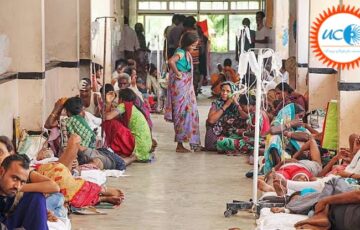Right To Education
The basis of democracy anywhere in the world is Universal Elementary Education. It is vital in strengthening the social fabric of any society. The Directive Principles of the State Policy (Part IV Article 36-51) enumerated in the constitution of India lays down that the state shall provide free and compulsory education to all children unto the age of 14. Over the period of time, there has been an increase in the number of elementary schools but the vision of achieving ‘universal elementary education has not been achieved yet. This would have a severe impact on the children of the weaker section of society. The marginalized children in the society would be affected to the extent that they would be missing out on one of the basic rights of any individual.
Therefore, Article 21-A was inserted into the constitution by the 86th Amendment Act of 2002 that aims to provide free and compulsory elementary education to all children in the age group of 6 to 14 years a fundamental right. Taking this reference, “the Right of Children of free and Compulsory Education Act” was passed by the Parliament in August 2009. The Right came into effect on April 1, 2010. ‘Free’ and ‘Compulsory’ are the basis of this Act. Earlier, since compulsory education for children was a directive principle, it was not enforceable by the courts. After the RTE came into force in 2010, it can be enforceable by the courts. To quote the amended Article 45 of the DPSP, “The state shall endeavor to provide early childhood care and education for all children until they complete the age of six years”. The amendment has also added a new fundamental duty under Article 51A which lays out that every citizen has to ensure opportunities for their children between the age group of 6 to 14 to receive an education.
The right to primary education had already been recognized under Article 21 (Right to life) by the Supreme Court in 1993. The court’s judgment was that every child has the right to free education till the age of 14 after which his/her education will be subject to the economic capacity and development of the state as well. A year before i.e. in 1992, the Court had declared every child would have the fundamental right to education even up to a higher-level irrespective of the type of education he/she pursue—even a professional education like medicine and engineering.
The 2010 RTE Act provides for free and compulsory education. Elaborating this phrase, by ‘Free education’ it means that not a single child, apart from the one who has been admitted by their parents to an institution not supported by the government should not be accountable to pay any kind of fee or expenses that might prevent him/her from pursuing and completing elementary education. On the other hand, ‘Compulsory education’ binds the appropriate Government and authorities at the local level to provide and ensure admission, attendance, and completion of elementary education by all children in the age group mentioned in the Act. There are some of the important features highlighted by the Act, some of which are providing physical infrastructure and other resources, age-appropriate classrooms, quality of teachers and teacher training, perception of children, etc.
These fundamental reforms in education have made India move forward to a rights-based framework that would oblige the Central and State Governments to implement this fundamental right of a child that has been enshrined in Article 21A of the Constitution in line with the RTE provisions. If implemented systematically, the vision of universal elementary education wouldn’t be a far dream.






